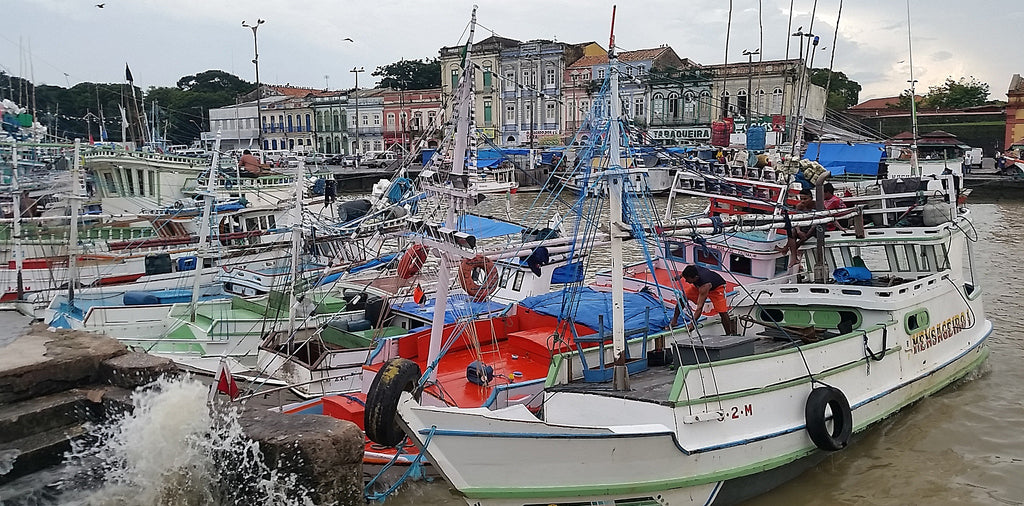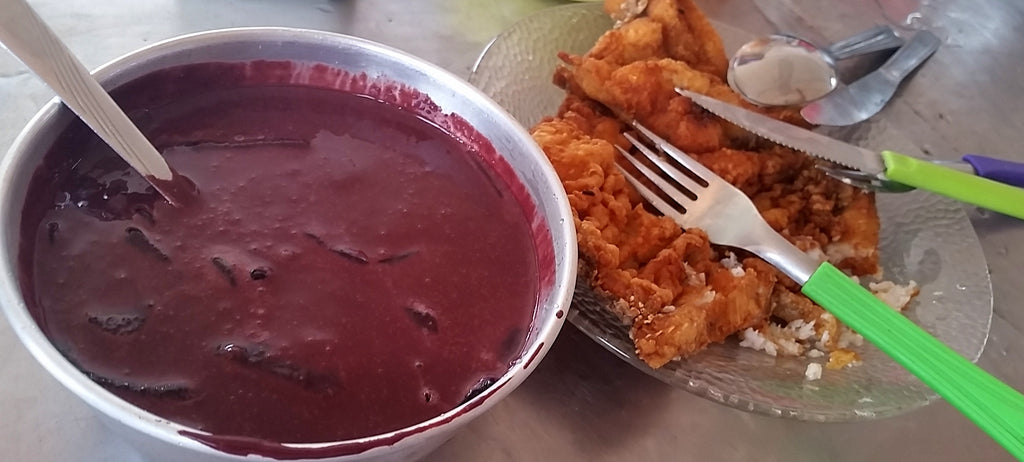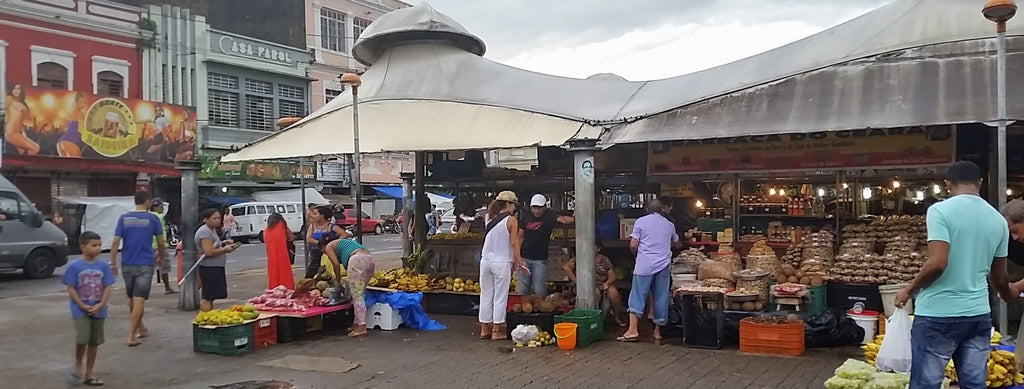Market Ver-O-Peso, Belem January 02 2016, 0 Comments

The Ver-o-Peso Market is located in Belém, capital city of the state of Pará, in the north area of Brazil. It is considered the largest open-air market of Latin America and supplies the city with various types of food and medicinal herbs from the interior of the Amazon forest, mainly provided through the river.
It is called "Ver-o-Peso" following a colonial era tradition, since the tax collector's main post was located there, which was called "Casa do Haver-o-peso" ("Have-the-Weight House"). It was there that the taxes over goods brought from the Amazon forests, rivers and countryside should be paid to the Portuguese crown, but only after their weight was measured, hence the name, which later suffered a contraction. It is one of the oldest markets in Brazil.
I was reading a few bad reviews on Trip Advisor, and I can't deny it, they are right, the place does smell, it is loud, not too pretty, very crowded at times, no one speaks English and if you don't pay attention and follow the usual "traveling to South America" rules, you will lose your wallet. Still, one of the coolest places I have ever been, and all the gringos I met there, agreed with me (strangely enough, most of the bad reviews came from Brazilians).
The market is located in the old part of the town, by the port and besides a big old warehouse, it is open air covered by big fixed tents. There you can find: fruits, veggies, herbs, oils, cures, candles, folk medicine, dried meats and fresh fish, jewelry and crafts and a bunch of little kiosks selling quick food and drinks: croquettes, beer, juices, sandwiches and the local favorite, their staple food: fried fish an acai.

They usually serve a fish called "filhote" which literally translates to "tiny son" but, ironically, is a huge fresh water fish that can reach up to 600 lbs. They eat it pan fried with a light flour coat. Their acai is just the pulp blended with water. As I was sitting there eating it for the first time, the locals were trying to teach me how to eat it, asking questions and cheering me on.


Mangoes, starfruit, cupuacu and passion fruit pulp (in the yellow bags).
I had never seen quite a few fruits and veggies they sold there, while they do have the southern imported apples, grapes, watermelon and oranges, and some local known ones, like passion-fruit, guava, mangoes, soursop, the most fun part is walking around checking out all their exotic goodness. I felt like a kid in a toy shop, I asked questions, touched everything and, of course, bought a bunch of different stuff. I have videos of me trying some of them on my YouTube channel. While most of them are quite good, I don't recommend that amount of exotic fruits in one sitting... It may cause a week long war in your belly (caused in mine, and by then I was in Rio for Carnaval! I had no time for that!)


Pupunha, a little fruit that needs to be cooked and tastes like potatoes and the locals like to eat for breakfast with black coffee, local boys selling fruits.


Separating Cupuacu's pulp from its seeds is hard task and needs to be done with scissors - Bacuri. was quite interesting, strong smell and taste, not bad, just like nothing I have had before. A lot of the fruits from the north have thick, strong skins and white pulps strongly attached to the seeds.


Dried meat and fresh fish. The meat comes from the south of the country, the fish is locally caught and sold daily at the market and to restaurants. They don't use fridges for their fish, they lay them on a counter and use a thin layer of ice on top. It gets less weird the longer you visit, and by the third time you eat fish there, you don't worry about it anymore...


Tons of Brazil-nut and cashews, seeing these usually expensive snacks being sold for the price of peanuts, makes you go a little overboard. I was walking around with 5 kg bags. Grapes and apples brought from the south of the country and the local guava usually cultivated in community farms.


Their jewelry are made from seeds, fish scales and leather. They are colorful and either made by indigenous tribes or inspired by them.

